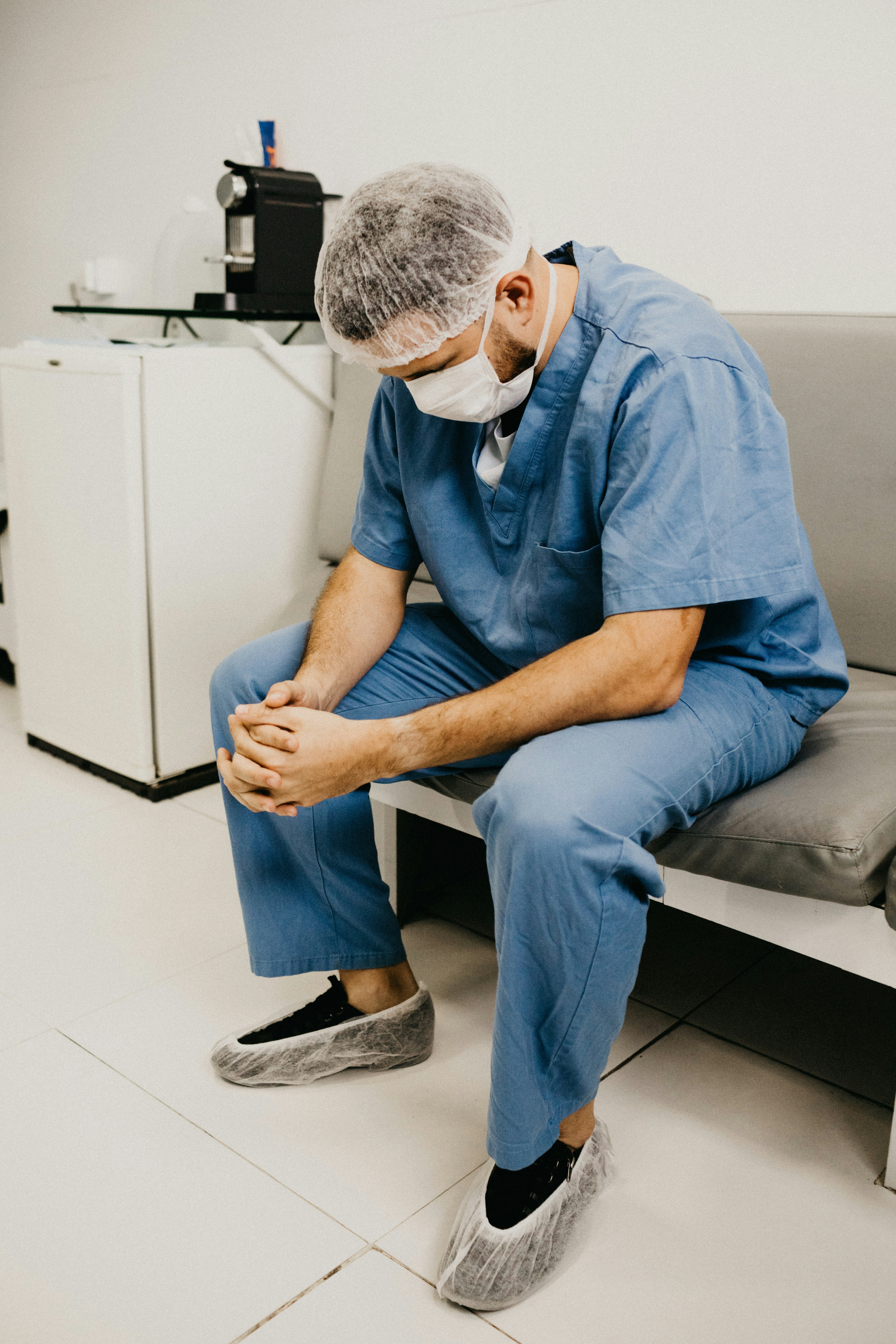As a trauma therapist, I’ve sat with many people who’ve endured unimaginable pain including violence, abuse, systemic oppression, war. But some of the most quietly suffering people I meet don’t describe themselves as trauma survivors. They are professionals, healthcare workers, therapists, first responders, social workers, and journalists, who carry heavy emotional burdens simply because of the work they do. They’re the professionals who encounter trauma every single day as part of their job, regardless of whether they are seasoned professionals or students and trainees, and are expected to be fine with it.
They are the ones listening to tragedy every day, witnessing suffering up close, and holding the stories of others. They’re also among the ones most likely to feel like they can’t talk about how it’s affecting them. They’re the helpers, healers, and truth-tellers. They’re also often the most unseen when it comes to trauma because what they experience is normalized, minimized, or outright dismissed as just “part of the job.”
But it isn’t.

When Trauma Hides in Plain Sight
Professional trauma occurs when your job repeatedly places you in contact with traumatic material, whether directly or indirectly. It doesn’t always look like a single catastrophic event. Often, it’s chronic exposure to pain, injustice, or suffering that gets pushed aside because the system demands that we keep moving. Over time, that exposure can begin to shift your emotional state, your ability to function, and even your belief in humanity. It hides behind overwork, irritability, apathy, or perfectionism. It’s overlooked in hospital breakrooms, newsrooms, classrooms, and courtrooms. It shows up as stomach aches, sleepless nights, or forgetting why you got into this work in the first place.
Because when trauma becomes routine, it becomes invisible.
In professions where holding space for others is core to your role, whether you’re treating PTSD or reporting on school shootings, it’s easy to absorb secondary trauma and moral distress. But when those experiences are left unacknowledged, they erode our sense of safety, empathy, and even our belief in our own goodness.
The Myth of Professional Invincibility
Many trauma-exposed professionals are reluctant to name what they’re going through. It’s not just about stigma. It’s about identity. We’re trained to believe that competence means control. That if we’re affected, we’re not cut out for the work. So when trauma exposure starts to erode your capacity, your hope, your mental clarity, or your sense of meaning, the internal response is often shame. But nothing could be further from the truth.
What’s far more dangerous than being affected by trauma is pretending that we aren’t. This is the therapist who becomes numb during a client’s disclosure of abuse. The nurse who sobs in their car before each shift. The young immigration lawyer interviewing those seeking asylum, finding themself unable to sleep for days afterwards. The student journalist covering a school shooting or campus assault, with no training in how to emotionally process what they’ve witnessed or written.
And yet, so often, we’re told, explicitly or implicitly, that being affected by our work is a liability. That we should be “objective,” “resilient,” or “professional.” That we can’t afford to show weakness.
Let me say clearly: being impacted by trauma is not a sign of failure. It’s a sign of empathy. And ignoring it doesn’t make it go away. It makes it worse.
The Unique Pain of Professional Trauma
One of the reasons that professional trauma is especially painful is how closely it’s tied to identity. If you’ve chosen a helping, healing, or truth-telling profession, chances are your work may feel like more than just a job. It may be your calling or a part of you that is closely aligned with your values.
A deep connection with a profession becomes particularly challenging in cases of moral injury, when professionals are forced into situations that violate their ethics or values. It’s common in healthcare, the military, journalism, and other service professions, and it often leads to deep shame and disillusionment.
Research now shows that the moral distress experienced by healthcare workers during COVID-19 is comparable to that of combat veterans after 9/11. There are many anecdotal examples of the emotional impact on journalists viewing tragedies that were unable to intervene. We need to widen our lens to include the quieter, but no less impactful, ways trauma shows up in these professions.
Dr. Lea Didion, co-founder of The Trauma Resilience and Education Center (TREC DC), discussed moral injury in depth in her keynote presentation at Grand Valley State University’s 2023 Hidden Wounds of War Conference, which you can view here:
🔗 Hidden Wounds of War: Moral Injury & Trauma-Informed Care – Dr. Lea Didion
Additionally, Dr. Didion speaks of the trauma student journalists may experience when being directly and indirectly impacted by campus-wide trauma and references the services and training available through the Journalism Trauma Support Network (JTSN) via the Dart Center for Journalism and Trauma, which offers resources, training, and peer support for navigating the emotional impact of reporting on violence, tragedy, and injustice.
The Many Faces of Indirect Trauma
Professional trauma doesn’t always come from a single catastrophic event and trauma doesn’t always look like shock or panic. Sometimes it’s burnout. Sometimes it’s compassion fatigue. Sometimes it’s zoning out during a session or story, or snapping at your partner over something small. Sometimes it’s numbness, rage, brain fog, or the sudden sense that nothing matters. These are some impacts of indirect trauma:
- Vicarious trauma alters your worldview and assumptions through repeated exposure to others’ trauma.
- Secondary traumatic stress looks a lot like PTSD – re-experiencing, avoidance, hyperarousal – without the “direct” trauma.
- Compassion fatigue numbs your capacity to care and connect.
- Burnout chips away at your energy, motivation, and sense of effectiveness.
These experiences are common among those who work with trauma. If you’ve felt numb, detached, irritable, chronically exhausted, or like you’re carrying too much, it may not just be stress. It could be trauma. And if any of these feel familiar, you are not alone and you are not broken.
From Wounding to Healing: The Path Forward
There is no shame in being impacted. And there is no professional path that makes you immune.
Healing begins with acknowledgment. At TREC DC, we work with trauma-exposed professionals across fields to foster resilience, post-traumatic growth, and vicarious resilience, the deep inspiration that comes from witnessing others’ strength and survival. Many of us are deeply changed for the better by the work we do, learning from those who survive the unimaginable and becoming more grounded, compassionate, and wise in the process.
We believe healing is not just personal, it’s collective. It requires trauma-informed systems, honest conversations, and a commitment to caring for those who care for others.
It starts by asking:
- Where am I carrying trauma that no one sees?
- What pain have I dismissed as “just part of the job”?
- What support would I give to others that I haven’t offered myself?
At TREC DC, we help trauma-exposed professionals prepare before hard situations, care for themselves during, and meaningfully recover after. This includes:
- Integrating grounding practices into daily routines
- Creating space for debriefing and emotional processing
- Building peer support networks and mentorship
- Learning to recognize the signs of trauma, burnout, and moral injury early
- Practicing boundaries, rest, and radical self-compassion
If your organization, newsroom, clinic, or classroom is ready to create trauma-informed systems that support emotional safety and resilience, TREC DC can help. If you’re ready to move toward healing, connection, and sustainability in your work, we’re here. Please contact us for consultation, workshops, or therapy for trauma-exposed professionals.


